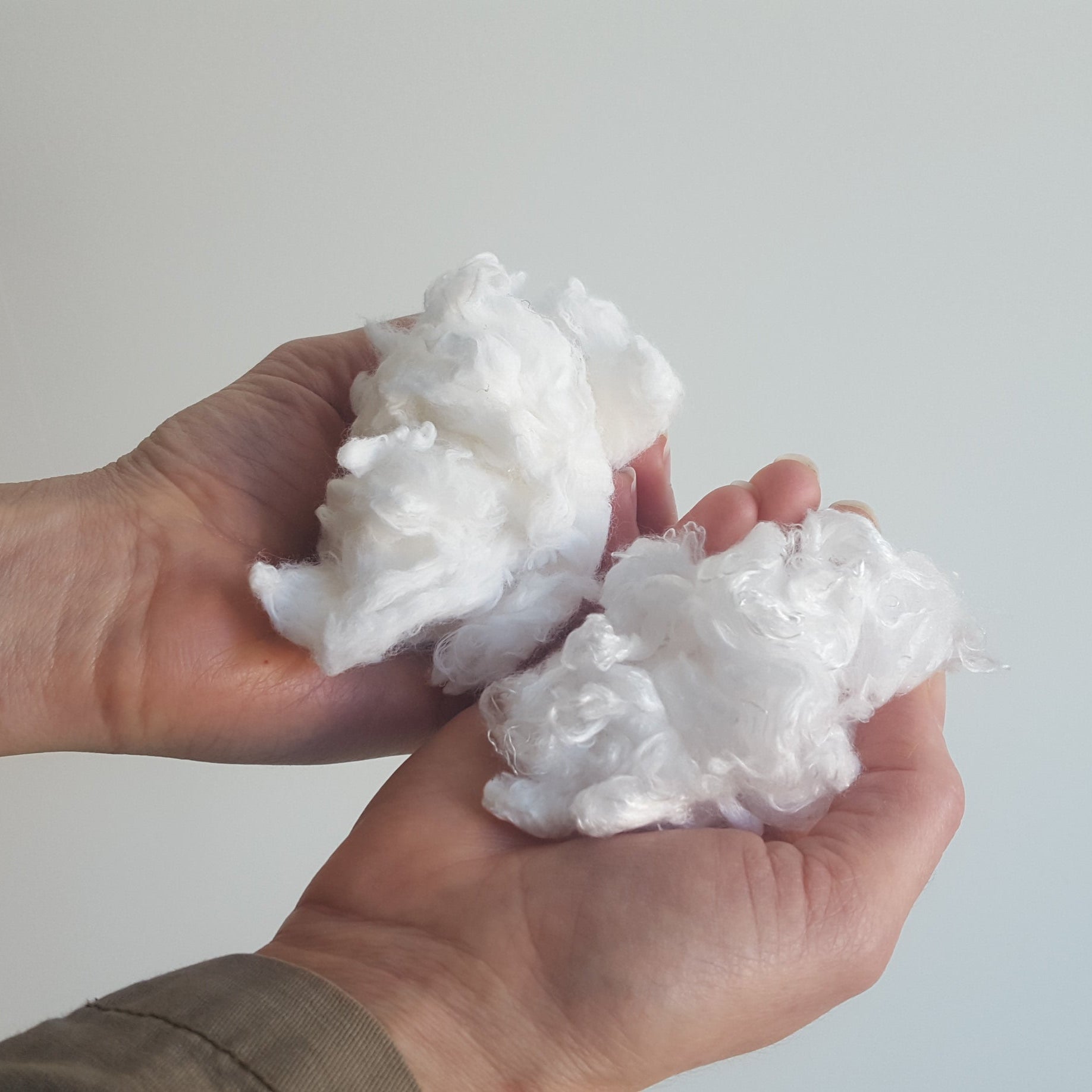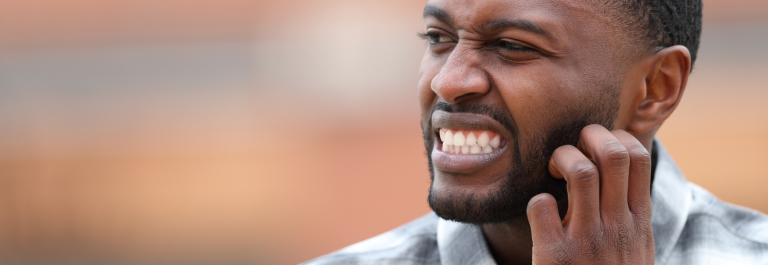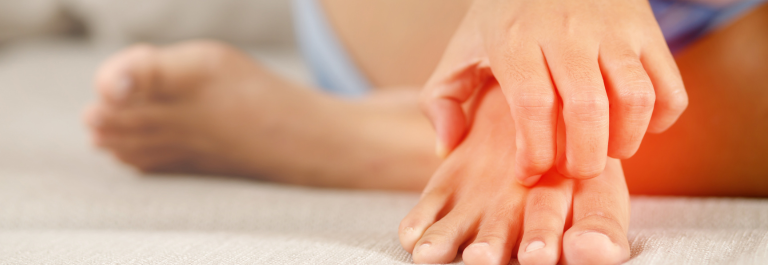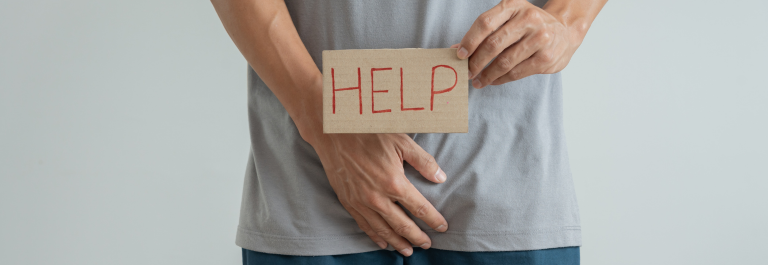Whether you're growing a beard for the first time or facial hair has always been part of your signature 'look,' it's common for your facial hair to get itchy.
That's why, throughout this post, we're going to break down everything you need to know about:
-
The leading causes of an itchy beard
-
Key beard itch symptoms
-
The most effective itchy beard remedies and lifestyle tips to combat skin irritation
Keep reading to learn more about how to stop beard itch today.
Why Does Beard Hair Itch?
Beard hair (also called androgenic hair) fundamentally differs from the hair that grows on your head. That's because your beard's growth is mainly driven by your testosterone levels, determining hair thickness and coverage.
You might experience an itchy beard for several reasons, ranging from mild, everyday factors to more secondary severe health concerns. So, let's take a look at some of the main culprits.
Dry Skin
One of the more common factors behind an itchy beard is dry skin, which may be caused by genetic and environmental triggers such as emotional stress, changes in the weather, or harsh chemicals in your skincare and hygiene products.
Symptoms typically include rough skin, scaling and flaking, cracked or bleeding skin, and tightness.
Pre-Existing Skin Conditions
In some cases, dry skin may also be exacerbated by an underlying skin condition such as eczema or psoriasis. Atopic dermatitis, for example, is characterized by extremely itchy patches of scaly, rough skin rash.
Side-Effects of Shaving
If you're used to shaving and growing your beard for the first time, your skin might feel incredibly itchy. That's because shaving creates a sharp edge on all your hair strands, which prick and itch as they push back up through your hair follicles.
Ingrown Hairs
An ingrown hair grows backward into your hair follicles after you've shaved rather than out through the skin's barrier. This leaves you with an inflamed hair follicle, causing a painful and often itchy bump.
Folliculitus describes a more severe form of hair follicle inflammation. While folliculitis may derive from clogged pores caused by ingrown hairs, this issue can also result from bacterial or fungal infections, resulting in pus-filled blisters.
Pseudofolliculitis Barbae
Pseudofolliculitis barbae is caused when new hairs curve around and grow back through your skin's barrier. This is more likely amongst people with curly hair and amongst Black people. Again, this is characterized by pus-filled blisters, which may become infected if not treated.
Fungal infection
Seborrheic dermatitis
This is a form of eczema caused by an overabundance of yeast on the skin. Seborrheic dermatitis is characterized by flaky skin and greasy-looking scales. It is prevalent across parts of the body where your skin is coated in natural oils, such as the scalp or the skin underneath your beard.
Dead Skin Cells
The root of your dreaded beard itch is the daily build-up of dirt, sweat, and dead skin cells within your facial hair, mainly if you don't shower regularly.
Treating An Itchy Beard
So you've discovered what's making your beard itchy but need to know what step to take next? We've got you covered.
Proper Beard Hygiene
Firstly, wash your beard every day to help fight dirt and bacteria build-up. We'd recommend using lukewarm water to avoid aggravating your skin further and finding a gentle, fragrance-free soap.
The Coconut and Sunflower Oil Soap Bar has been specially designed for highly sensitive skin, combining nourishing coconut oil, shea butter, and sunflower oil in soap to leave your skin feeling deeply moisturized and smooth. Just dry your beard thoroughly after washing - airdrying your beard could dry out your skin beneath!
You may also use a gentle beard shampoo or wash for extra cleaning power. An exfoliating cleaner may also help you remove dead skin cells. Make sure you patch-test any new products.
Beard Conditioner
As well as keeping your beard clean, you'll also want to keep your beard hair well-conditioned. We recommend finding a beard oil or beard balm containing wholesome, hydrating ingredients such as coconut or argan oil.
Using a beard brush is another great way to help move the natural oils from your sebaceous glands down your hair, keeping your beard soft.
Nourishing Skincare
If you're serious about beating beard itch, you must also treat any dry facial skin lurking underneath your beard hairs.
The Nourish + Hydrate Manuka Balm is a honey-based balm made from deeply moisturizing olive oil, manuka honey, and beeswax to restore even the most sensitive, raw, and cracked skin. Manuka oil contains naturally antibacterial, antifungal, and anti-inflammatory properties - which is excellent when combating seborrheic dermatitis (including beard dandruff) or to treat pseudofolliculitis barbae.
Speaking With A Doctor
If your beard itch persists, it might be time to speak with a doctor. For more severe fungal and bacterial infections, for example, your healthcare provider may wish to prescribe an antifungal or corticosteroid cream.
Stop Beard Itch Today
Follow these tips to help you better understand why your beard has been itchy and how best to tackle your symptoms today.

